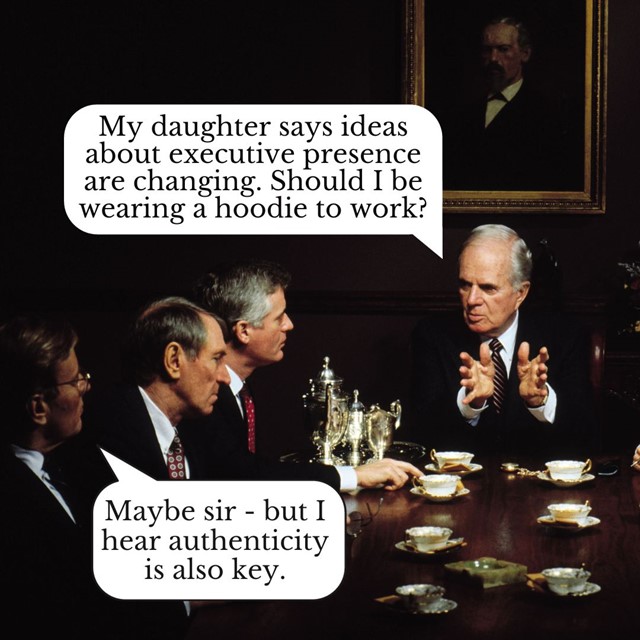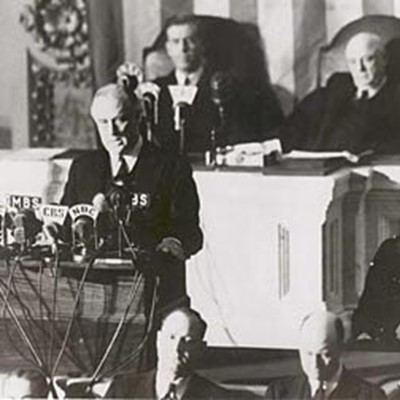
When people attend our public speaking programs, they're often hoping to enhance their executive presence (or EP), though sometimes it's hard to know exactly what that means - to them or for us as their coaches.
As leadership in companies has become more diverse, ideas about how an executive looks and behaves seem to be changing. Or at least that's how we think it's been feeling Now new research published in the Harvard Business Review suggests that is the case. Our feelings have been validated.
In "The New Rules of Executive Presence," economist Sylvia Ann Hewlett compares surveys she conducted in 2012 and 2022. She's found that many of the same communication traits are still valued. But, she discovered significant shifts in attitudes about appearance and a new appreciation for authenticity – changes we've long encouraged and embraced in the way we teach presentation skills.
"Covid-19 sped up the shift to virtual communication, and many of the executives I interviewed in 2022 told me that they struggled to master the art of leading on Zoom, Teams, Slack, and other online platforms. But doing so is key to EP today."
– from "The New Rules of Executive Presence"
Communication skills are more important than ever
Strong speaking skills are still the top trait identified with executive presence, but by 2022 with the rise of virtual meetings, a leader's ability to command both the room and Zoom are in demand.
However, an executive's forcefulness and ability to joke and banter are not nearly as important now as fine-tuned listening skills and bringing your own personal style to communicating.
To make the most of these shifts, Hewlett includes a number of tactics we whole-heartedly endorse in our Executive Seminar and other communication workshops:
- Cut out the fluff and get to the heart of the matter as clearly and cleanly as possible.
- Manage meetings so everyone knows why their participation matters.
- Build relationships with audiences by bringing your personal experience to messages and speaking to people eye-to-eye.
- Maximize your strengths instead of seeking perfection.
- Be yourself—but also meet your audience where they are.
Confidence and decisiveness still count
One thing that hasn't changed since 2012 is that people still rank two qualities as their top traits for projecting the gravitas they look for in leaders: confidence and decisiveness.
While public speaking in only one component in projecting these qualities, speakers can certainly take big steps toward reinforcing both in the way they approach planned presentations and unscripted messages.
For speakers, confidence can show itself in dozens of ways and should not be considered synonymous with self-satisfaction or arrogance. We encourage speakers to project confidence by:
- Bringing physical energy to the messages a leader delivers. While the appropriate energy level depends on an individual's style and the context of the message, audiences need to see that speakers are willing to work for them and that the message matters to the speaker.
- Controlling pace and channeling energy. High energy that's not controlled does not communicate confidence--and can send signals that the speaker is nervous or out-of-control. Pace and body language should support the message, because a comfortable rate of speech and easy, purposeful movements help a speaker make their point and convey their confidence.
- Minimizing the use of tentative language. We've heard high-powered executives water down strong statements with tentative verbiage such as kinda, sorta, and I think. Often, use of tentative words comes from a good place, a desire to not seem arrogant or over-confident. Yet, a steady, default reliance on tentative language will undermine the air of decisiveness that most executives want to project.
Finding your way to the presence you want to project
Perhaps the best news to us is that there's so much more room for people to be true to themselves, something we've always valued in our public speaking training.
Graduates of our program will tell you: The last thing we want to do is create a panel of Buckley clones. We believe what makes a presenter interesting are the things that are unique to them – accents, perspectives, appearance, and life experience just to name a few.
We're happy to see ideas about executive presence becoming broader and more inclusive, making it that much easier for each speaker to use their unique style and strengths to engage audiences.
LEARN MORE
Find the full Harvard Business Review article here.
For our how-to guide to project confidence from the podium, see this.
For a look at how public speaking – not extroversion - influences perceptions of leaders, check this out.
Here's our guide for cutting the filler words that undermine your executive presence.
Want to polish your communication skills? See how our Executive Seminar can help.






